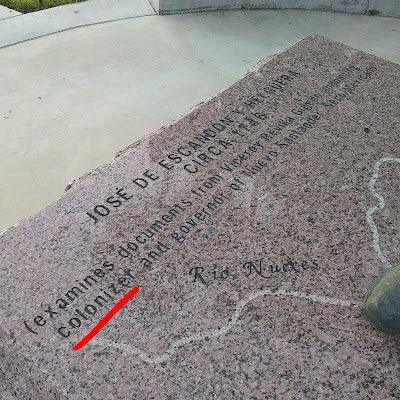This was a letter I set to my university president, Guy Bailey, last month. I’m posting it today because I think in the US, 4 July is a good day to have serious discussions about history.
I was also motivated by listening to “Return of Oñate’s Foot” on the 99% Invisible podcast – an excellent telling of a story about a somewhat similar historical figure.
Hello,
I was pleased that you addressed issues of racism in your email of 2 June. I wanted to bring up an related item for your consideration: the statue of José de Escandón on Edinburg campus. The statue describes Escandón as a “colonizer.” I suggest you consider whether a statue of a “colonizer” is in line with UTRGV’s values.
In particular, Escandón’s professional climb that led to his mandate to colonize the region was in part based on his success in quelling uprisings of Native Americans and “pacifying” them. That alone is problematic, particularly for our Native American students (5-11 students over the last four years). but also consider the larger role of colonialism in perpetrating slavery and genocide.
Other universities are
taking this moment to examine and change the symbols that represent racism and
colonialism. Imperial College London changed
its logo to remove its motto. They recognized their motto, “Scientific
knowledge, the crowning glory and the safeguard of the empire” is “is a
reminder of a historical legacy that is rooted in colonial power and oppression.”
Over the last few weeks, many communities worldwide
have been re-examining their statues and the messages they send. Protestors pulled
down a statue of a slave trader in England. McGill University students are petitioning
to remove a statue of university founder James McGill, who owned slaves.
Statues glorify individuals
and values. I hope that you will consider whether this statue represents values
that UTRGV supports.


No comments:
Post a Comment